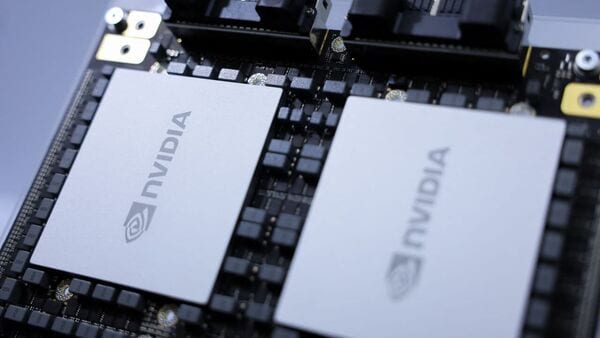Nvidia has made life at the top look easy. But staying there is going to be anything but.
The chip maker, which has gone from a niche videogame component supplier to a $3 trillion enterprise in just a few years, put up another round of strong results Wednesday. Its now-dominant data center segment increased revenue to $26.3 billion — more than 2½ times what that business generated a year earlier. Adjusted operating income for the quarter more than doubled year over year to $19.9 billion. Nvidia’s overall top and bottom lines beat Wall Street’s targets, as did the company’s forecast for the current period ending in October.
But the magnitude of those beats was smaller than what Nvidia has been delivering over the past year, as its business exploded on booming demand for artificial-intelligence capabilities from the world’s largest tech giants. Expectations from investors have blown up right along with it. Nvidia’s projected revenue of $32.5 billion for the current quarter ending in October was 2% ahead of Wall Street’s targets; the company’s projection for the same period last year beat analysts’ consensus by 28%, according to FactSet data.
Also, the new products that Nvidia is building to stay well ahead of the competition are rising significantly in complexity — weighing a bit on the company’s gross margin line. But even that is a bit of a nitpick; Nvidia’s gross margin of 75.1% for the most recent quarter was down 3 points from three months earlier, but well above the 65% the company has averaged over the past four years. And even at 75%, Nvidia is commanding a higher gross margin than all but one of the other companies on the PHLX Semiconductor Index, according to data from S&P Global Market Intelligence.
Nvidia is doing fine, in other words. The stock slipped about 7% in after-hours trading Wednesday, following the company’s report and conference call. That is a minor haircut for a company that has seen its market cap increase more than fivefold in the past 18 months. But that increase has put Nvidia under an intense spotlight befitting a company valued on par with Microsoft while generating less than half of the software giant’s annual revenue. The chip company with the funny name has quickly become a household name; Wednesday’s earnings call even spawned watch parties among investors and fans eager to track the action.
Such an intense spotlight is rarely forgiving for long, especially given the growing concern investors have over the AI spending being committed by Nvidia’s biggest customers. In their own recent earnings reports, Microsoft, Amazon, Meta Platforms and Google’s parent, Alphabet, reported combined capital spending of $58.5 billion just for the June quarter — up 64% year over year. All four projected that spending would stay elevated this year and into next, and all pointed to “AI infrastructure” as the main driver.
That has been great news for Nvidia, which commands the lion’s share of the AI chip market. But the durability of that spending is still a question — especially if actual demand for generative AI services doesn’t materialize at the pace that tech optimists currently envision. Questions about that spending outlook dominated Nvidia’s call Wednesday. Chief Executive Officer Jensen Huang waxed confident, predicting that “next year is going to be a great year.” At a $3 trillion market cap, Nvidia’s biggest challenge these days is that great isn’t always good enough.



